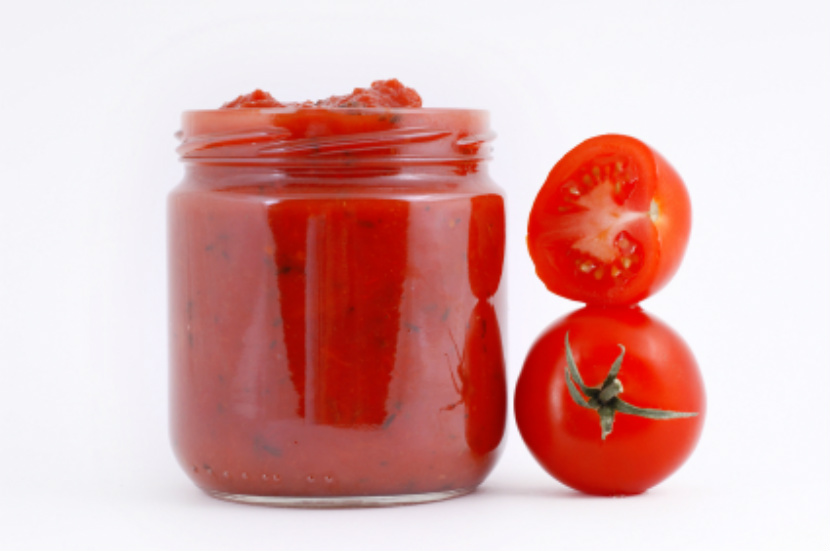
Pasta and sauce is a classic combination. Jarred and canned sauces are convenient, but many prepared sauces can be high in sodium (salt) and fat. Here are some tips to help you choose the most nutritious options.
What type of pasta sauce to choose
When possible, try making your own pasta sauce at home. When you make pasta sauce from scratch, you can have more control over how much salt, fat and calories are in it. Try this simple recipe at home using canned tomatoes.
If you are buying a jarred or canned sauce, choose a tomato-based (marinara) sauce rather than a creamy sauce. Creamy sauces usually have more saturated fat and calories. Eating too much saturated fat has been linked to heart disease. Tomato-based sauces also contain more nutrients like vitamin A and lycopene.
What to look for on the pasta sauce label
If you’re looking for a jarred or canned pasta sauce, here are a few tips to keep in mind:
- Sodium (Salt): Read the Nutrition Facts Panel and look for a sauce with 360 mg or less of sodium per serving (a serving is ½ cup or 125 mL). You can also use the % Daily Value on the label to compare sauces. The higher the % Daily Value, the more sodium there is.
- Saturated Fat: Read the Nutrition Facts Panel and look for 2 grams or less of saturated fat in each serving.
For added nutrients, choose sauces that have vegetables like mushrooms, spinach or peppers.
Tomatoes and lycopene
Tomatoes are a great source of the antioxidant lycopene. A diet rich in antioxidants helps keep you healthy and prevent chronic diseases. Eating foods that have lycopene may also help lower the risk for prostate cancer. Lycopene is best absorbed by the body when tomatoes are cooked rather than raw, like in tomato or pasta sauce.
When choosing plain sauce
Plain canned or jarred tomato sauce or diced tomatoes is a good buy and you can flavour it any way that you want! Add chopped onions, garlic, carrots, celery, peppers, mushrooms, spinach, broccoli or kale for an extra serving of vegetables. Then add some herbs and spices like basil, oregano, chili flakes, freshly ground black pepper or lemon zest.
Five nutritious ways to use pasta sauce
Quick ratatouille
Sauté chopped green peppers, zucchini, onion, eggplant and garlic in olive oil. Add two parts pasta sauce to one part water and some fresh basil. Simmer until vegetables are tender.
Pizza style baked potato
Bake potatoes in the oven until tender. Then make a slit in the baked potatoes along the top and stuff with some pasta sauce, sautéed pepper and mushrooms. Top with shredded mozzarella. Bake at 400ºF until the cheese melts and serve with chopped green onion.
Baked beans with a twist
Simmer one cup of pasta sauce with 1 tbsp honey mustard, 1 tbsp brown sugar and 1 can of white beans (rinsed and drained) until bubbly. Serve with whole grain bread and a salad.
Pizza-style quesadilla
Spread some pasta sauce on a whole grain tortilla. Top with grated mozzarella cheese, sliced mushrooms and shredded chicken. Fold in half and bake in the oven until golden.
Saucy curried chicken
Place 4 skinless, boneless chicken breasts (or 12 skinless, boneless thighs) in a deep baking dish. Add 2 cups of baby carrots or carrots sticks. Mix 2 tbsp curry powder with 2 cups pasta sauce. Pour sauce over chicken and carrots. Bake at 400ºF, covered with foil, for 30 minutes and then bake uncovered for 30-35 more minutes.
Other recipes with pasta sauce to try:
Lentil Spaghetti Sauce
Chicken Vegetable Lasagna
Speedy Flatbread Pizza
How can a dietitian help?
Dietitians can support you throughout many phases of your life, from pregnancy to eating well when you are older. Counselling sessions with a dietitian can also help you to prevent and treat health conditions like diabetes and heart disease. Your dietitian will work with you to give you personalized advice that meets your lifestyle and goals. Connect with a dietitian today!
Bottom line
Canned and jarred tomato sauce can be a convenient and versatile ingredient in many recipes. Look for options that are lower in sodium and saturated fat.
You may also be interested in:
All About Canned Tomatoes
What You Need to Know About Antioxidants
Top 5 Reasons to See a Dietitian
This article was written and reviewed by dietitians from Dietitians of Canada. The advice in this article is intended as general information and should not replace advice given by your dietitian or healthcare provider.
Last Update – October 2, 2023